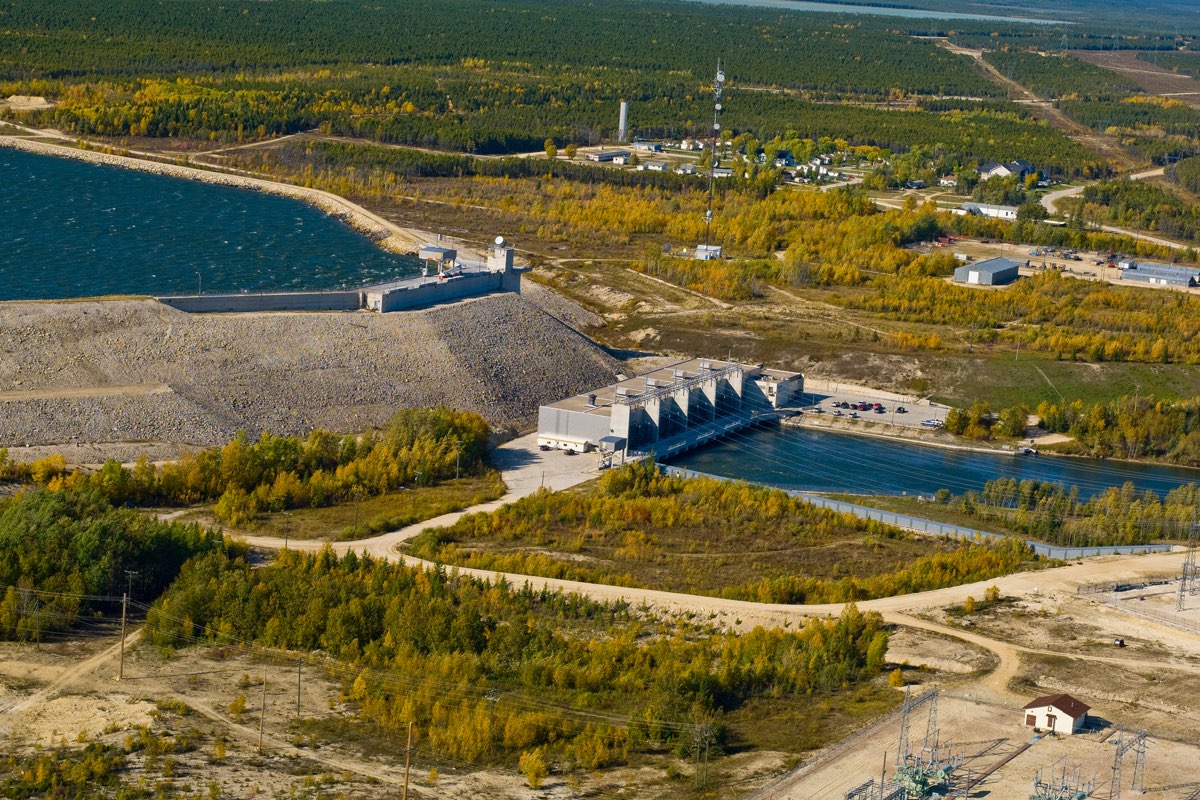Grand Rapids Generating Station

Grand Rapids Generating Station stands alone as our only generating station on the Saskatchewan River, but that isn’t the only thing that makes it unique.
Completed in 1965 with a capacity of 479 megawatts, Grand Rapids is our sole station to have its spillway structure located almost five kilometers away from its intake and powerhouse structures — rather than adjacent. This feature enables water in the forebay to be discharged down the old river channel, rather than down the powerhouse tailrace channel. This design feature was done to keep construction costs to a minimum. By locating the powerhouse close to Lake Winnipeg, it minimized the length of the discharge channel (which otherwise would have had to be blasted and excavated). Another feature that sets Grand Rapids apart from our other stations is the unique design of the concrete intake structure in relation to the powerhouse itself.
From the intake, four penstocks (round pipes almost 30 feet in diameter) lead downwards at an angle of 22 degrees to the turbine runners. Water flows through the penstocks to turn the turbines to produce electricity. Each penstock has two gates. While this design feature is quite common in generating stations elsewhere, at Manitoba Hydro it is unique — in most of our plants the intake structure is integrated into the powerhouse itself. The decision to install penstocks versus extending the powerhouse to the intake was made to be diligent about costs during construction.
A final point of interest that sets Grand Rapids apart is that it acts as the controlling station for our entire provincial power system. The station’s four units operate on load frequency control — meaning that turbines respond to every change in the demand for electricity to keep the frequency constant on our system.
A turbine runner design that can efficiently operate over a wide range of unit outputs is essential to enable load frequency control. Thus the type of turbine runner at Grand Rapids is also different than the turbine runners at most of our other stations where the blades of the runner are fixed. At Grand Rapids, the runner blades can rotate about their axis, maintaining a very high operating efficiency as they respond quickly to changing demand on our grid.
